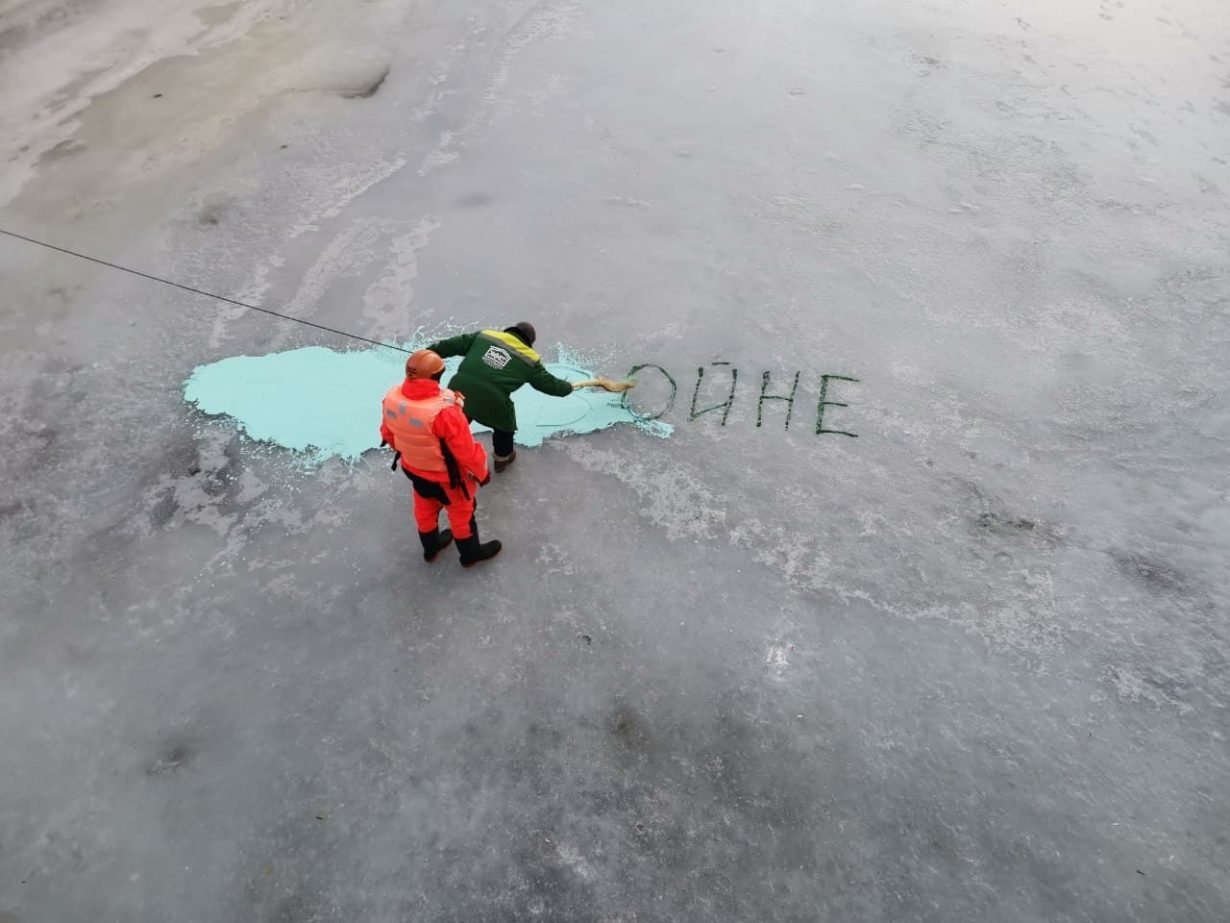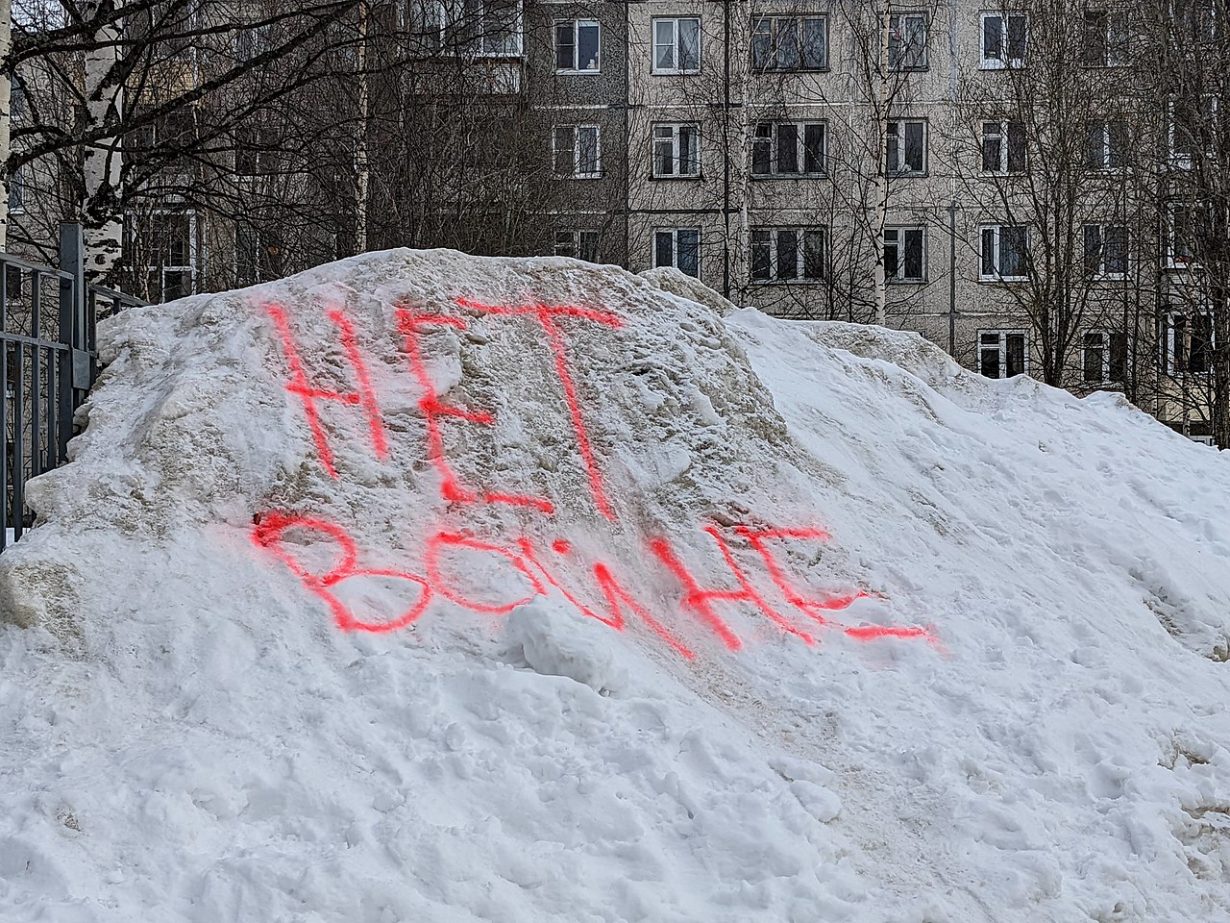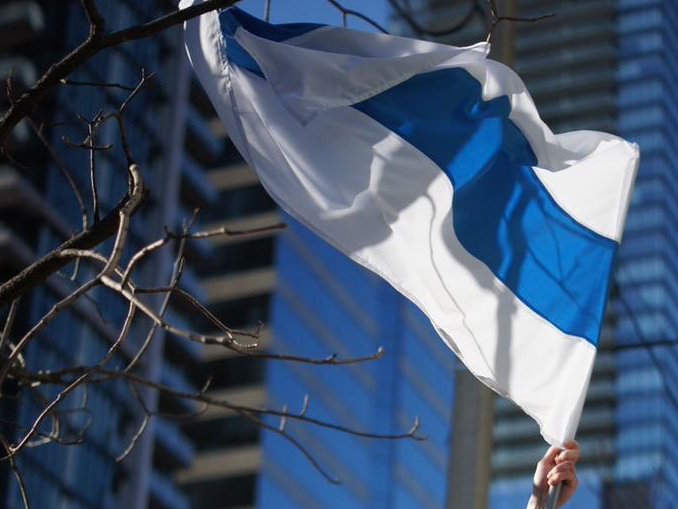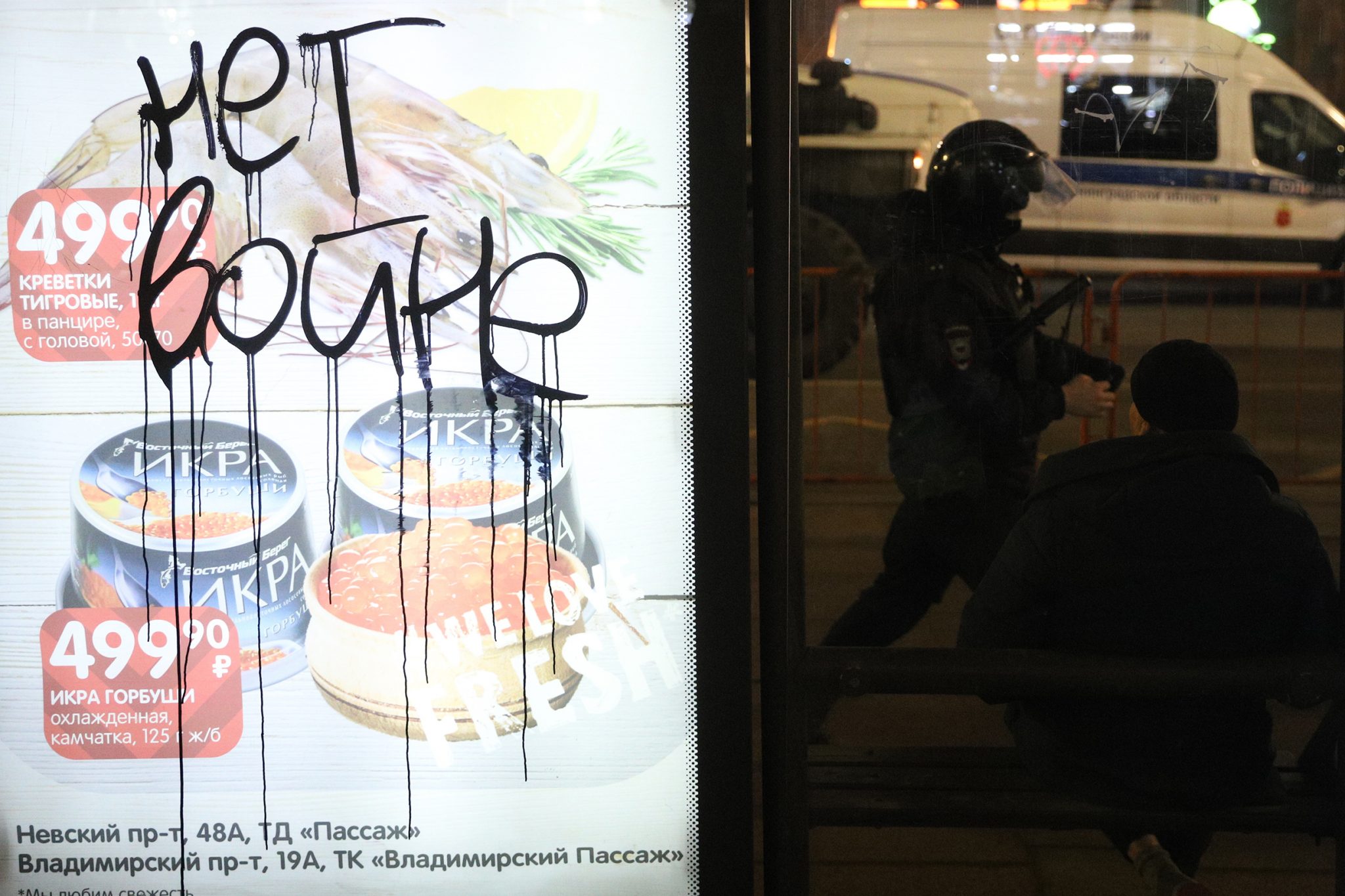Threatened with beatings and 15-year prison sentences, protesters have had to resort to subtler forms of dissent
On 8 March, women around Russia left flowers at Soviet war memorials: chrysanthemums and tulips bound with ribbons in blue and yellow – the colours of the now-ubiquitous Ukrainian flag. The action, led by the Feminist Anti-War Resistance group, marked International Women’s Day – historically a major holiday in Russia, where women are showered with flowers and greetings.
‘We, the women of Russia, refuse to celebrate March 8 this year: don’t give us flowers, it’s better to take to the streets and lay them in memory of the dead civilians of Ukraine,’ read a statement from the collective.

These quieter – but very public – signs of dissent are some of the actions Russian citizens have taken to register their extreme revulsion towards the Kremlin and the ongoing invasion of Ukraine (physical protests continue, but incur heavy risks – police detained more than 4,300 protesters in 56 different cities this past Sunday alone). However, as anti-war graffiti springs up across cities around the country, even such anonymous expressions of dissent are being clamped down on. Street artists often see their work covered in bizarre and troubling ways. Even a piece of text reading ‘Ukraine is not an enemy’ might be simply graffitied over by Russian ‘patriots’ painting a letter ‘Z’ over their work (‘Z’ being the symbol on Russian military vehicles entering Ukraine).
In Saint Petersburg last weekend, someone carved ‘no to war’ into the ice of a frozen stretch of the Moyka river, prompting authorities to partially paint over it in a putrid shade of cyan – and when realizing that it wasn’t very effective, covering it with dirt. Meanwhile, a presenter on the state channel Moscow 24 was immediately fired from his job after simply advising viewers not to affix a “toilet-paper ‘Z’” to their cars. In the city of Vladimir too, authorities recently opened a criminal case against three artists on the basis of vandalism committed for ideological or political reasons, before painting over the ‘no to war’ graffiti that they may or may not have done.
These small poignant protests and subsequent attempts to silence them would verge on the ridiculous, if the circumstances weren’t so grim. One woman in the Siberian city of Krasnoyarsk, Vera Kotova, was fined 30,000 rubles (around $200) for simply writing ‘no to war’ in the snow. An LGBTQ+ activist, Dmitriy Yartsev, was detained in Moscow after someone at his fitness club reported that he “put on yellow-blue socks … which corresponds to the flag of Ukraine,” his lawyer told me. “She was indignant at this kind of behaviour.”

“People really don’t understand what’s going on,” one Russian artist told me. “They can’t imagine.” (Older generations still get much of their news from television, creating a harsh divide over the war.) The artist recently produced her own anti-war graffiti, “and a few days later this ‘Z’ appeared over it.” There are “style wars on official paintings, they are getting modernized by other artists – it’s like a real comic,” she said, referencing a pro-Putin mural in Yekaterinburg which appeared last week and was promptly defaced with the word ‘tribunal’.
There’s an upside of sorts. Little protests and sporadic graffiti may not change much, but they at least provide others who feel alienated and silenced with small slivers of hope in a sea of state propaganda. Expressions of dissent are beginning to reappear in public spaces (during the pandemic it was mostly online), even if this real-time visual argument about the war has been relegated to the walls of suburban apartment units. “There is quite a vivid communication that goes on […] people reply to inscriptions, there are so many quarrels,” Oksana Zaporozhets, an urban studies scholar at Moscow’s Higher School of Economics, told me. This means there is physical visibility for the anti-war movement – even if it is at a localized level.
“I think this [shift] to semi-public spaces is quite close to the situation in Minsk, where at some point protests moved from the city centre to residential areas, because that’s where people live and can read or see and react,” said Zaporozhets. She noted that you see this anti-war graffiti less in major public areas which authorities have colonized with street art of their own. The latter official form of ‘street art propaganda’ is a relatively recent phenomenon (I personally remember seeing a massive mural of Lastivchyne Hnizdo – Swallow’s Nest, a castle on the Crimean peninsula – popping up in a trendy area of central Moscow back in 2014, around the time that Russia annexed Crimea).

It’s hard to know if street art actions, which perhaps create some small cracks in the sense of totality, can have any real impact beyond making people see that they’re not alone – and artists themselves can be complicit too. “Collaboration with authorities started quite early, so in 2014 everything was ready for ‘closer’ cooperation,” Zaporozhets said. The renovation, and beautification of Russian cities aimed to make citizens loyal to a clean city, “one without spontaneous inscriptions or imagery”. Anti-war protest art directly threatens this idealized vision of a beautiful city.
Meanwhile, social media, so important during the pandemic, is seeing something of a decline in usage on account of the newer, harsher censorship laws and accounts that can easily be connected to their real users (street art, or simply leaving flowers at a memorial, conversely, permits a degree of anonymity). Even if Russians can’t reference the ongoing war, many have changed their profile pictures to black or white to indicate mourning or the need for peace. Instead of using the Ukrainian flag online (some people might not feel safe overtly indicating they are pro-Ukraine), you sometimes see people posting the Russian tricolour, with an extra white band replacing the red – the logic being that it is the Russian flag but ‘without the blood’.

The visual battle over support or distaste for war inevitably creates a cognitive dissonance. Censorship, of course, extends over both the virtual and the physical, and Russians are being fed streams of disinformation about how the ‘special operation’ is ‘denazifying’ Ukraine – that don’t correspond with personal realities. Leaked footage from an OMON riot police base in the city of Novokuznetsk showed Kemerovo regional governor Sergei Tsivilyov attempting to convince locals that they had not been deceived about events in Ukraine. Young men “were sent as cannon fodder,” one woman yelled. Another asked the governor where his own son was. “Studying at university”, he replied. It’s an emotional, poignant scene that points to the rifts in the regime’s TV-based version of the invasion.
But whether the truth will prevail – in a country which dishes out harsh beatings to protesters and 15-year prison sentences to those who discuss the reality of the invasion – is not a risk that the tens of thousands of Russians fleeing the country want to take. They might not be able to make their own cracks in the façade of the beautiful city, but at least they can still post on social media.
Aliide Naylor is a journalist focusing on Russia and eastern Europe. She is the author of The Shadow in the East: Vladimir Putin and the New Baltic Front (I.B. Tauris, 2020).
